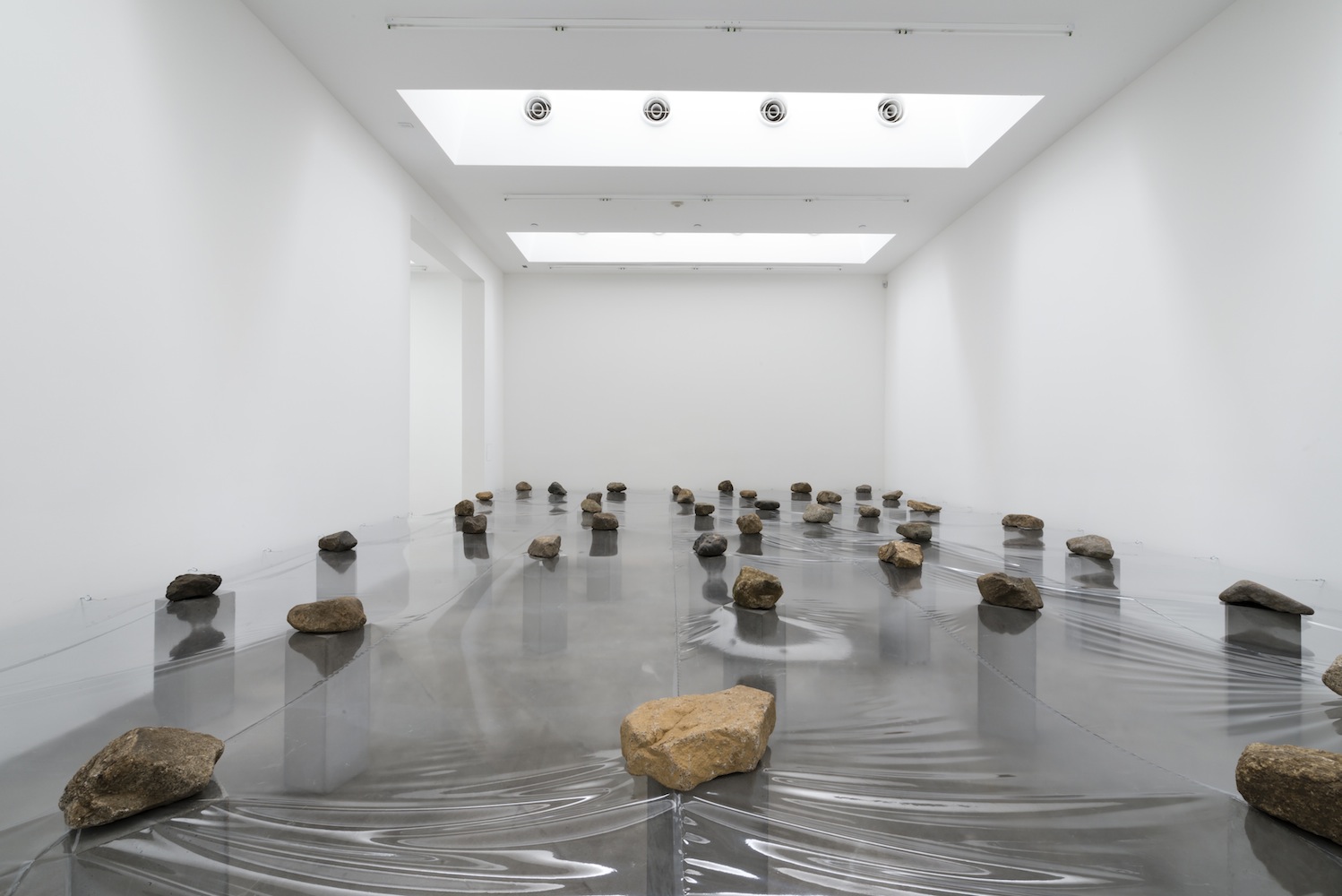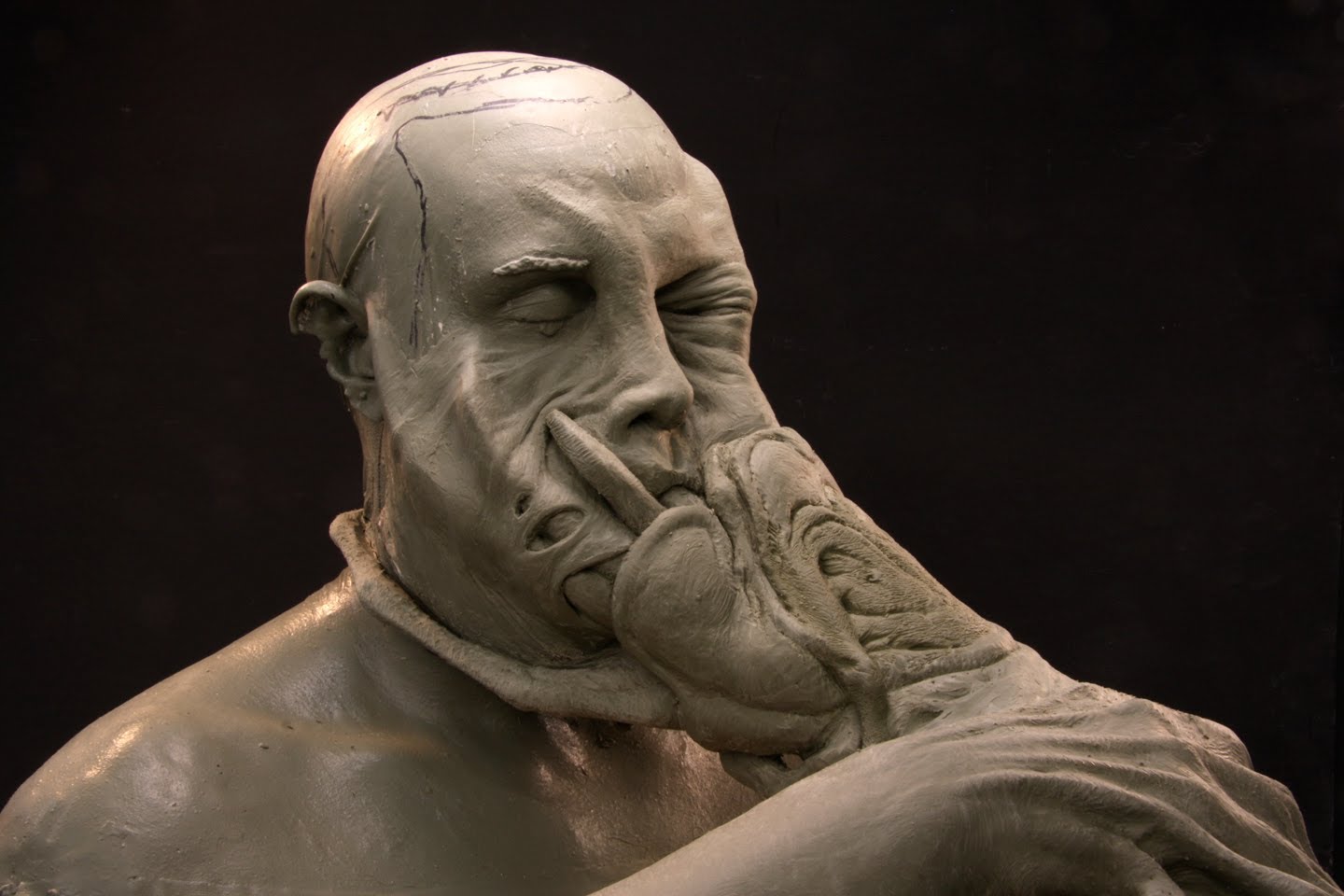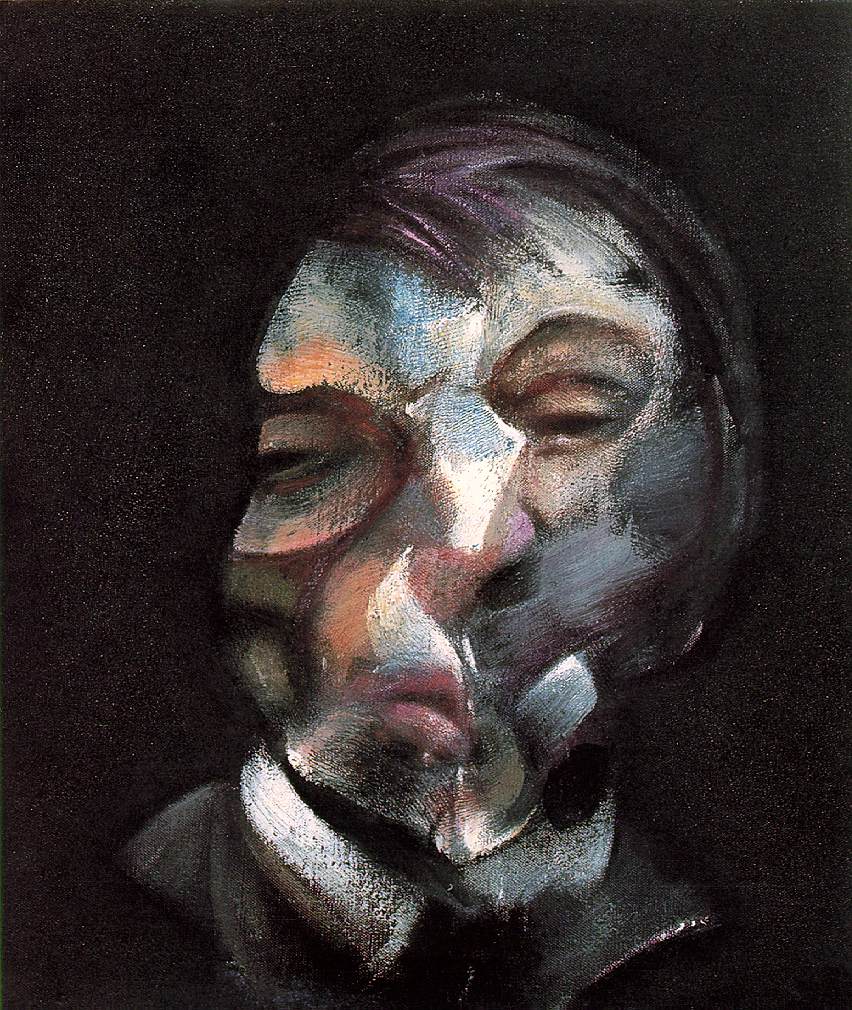The following article is the first installment of a two-part series. The second installment can be found here.
I. Introduction.
“One, two, three, but where is the fourth?”
I was reminded of this question while reading Prof. Brian Becker’s paper “Flight from the Flesh” as he attempts to translate Freud’s topological tri-partition of the soul into Marion’s phenomenology. Becker’s paper establishes an analogy of sorts between the id and the flesh, the body as idol and the ego, while, in conclusion, speculates that the third saturated phenomenon, the icon, could correspond to the super ego. Yet, the fourth saturated phenomenon, the event, remains unaccounted in this conceptual correspondence.
So, like Socrates at the beginning of Plato’s Timaeus, I ask: “but where is the fourth?”
To re-read Freud through Marion, to translate psychoanalysis to phenomenology and phenomenology to psychoanalysis is an admirable task of which I am fully supportive. Without question, it is the ability of a synthetic mind and of a good scholar to recognize family resemblances between one’s own field and that of others, to be “multilingual” when it comes to the language games by which specific schools of thought articulate themselves, and to refuse the confinement to one’s epistemic home. Freud himself was famous from being such a merchant of ideas, importing and exporting concepts and terms that have now become a commodity of our everyday language.
Yet, what I found fascinating in Prof. Becker’s paper was not so much the dialogue between psychoanalysis and phenomenology per se, as much as the implications of this dialogue. It takes some time for the reader of his paper to realize that the application of phenomenology’s sorcerous potions on psychoanalysis transforms the discussion about the soul into what one may take to be its very opposite, namely, a discussion centered around the body. Here both psychic entities or functions—the id and the ego—become translated into the language of the bodily, as flesh and body respectively. We will return to this conversion of the soul to the bodily later on.
For now I would like to pick up the task of the dialogue between psychoanalysis and phenomenology from where Becker’s paper has left it. In the final paragraph of his paper, Prof. Becker writes:
Among the many possibilities still before us, one of the most intriguing is the connection between the interiority of the subject, defined in terms of saturated phenomena, and the understanding of intersubjectivity in terms of the gift. It is a limitation of this paper that I have not addressed more explicitly the fundamental role of intersubjectivity in the formation of subjectivity other than what is implicit in some of the notions discussed in this paper. Thus, a fecund direction for future work should endeavor to consider the manner in which the other is constitutive of my subjectivity, looking to the concept of the icon as a reformulation of the superego, an introjection of the other who we do not see but whose gaze pierces us with eyes that gives the ability to see again but with a sight that is not our own.1
One could indeed raise some legitimate questions on the proposed correspondence between the icon and the super ego. Yet, more important is the appearance of the Other in a conceptual scheme organized by the trinity of id, ego, and super ego. Following Becker’s suggestion that “a fecund direction for future work should endeavor to consider the manner in which the other is constitutive of my subjectivity” I propose that we learn counting beyond three.
I. The Missing Fourth
We are aware of three spatial dimensions within which we move and live and within which we encounter objects, things present- and ready-at-hand, to recall Heidegger’s analysis of being-in-the-world in Being and Time, a world which unfolds mostly within the confines of three-dimensionality. Is there, however, a place for the Other in such three-dimensional world or, our encounter with the Other in a world of three dimensions is already governed by the logic of objectification, limiting, that is, the Other to the contours of an object? Within three-dimensional space, the space of threes, one can only discover oneself and others as objects—as objectified bodies (Körper).
Yet, there is a fourth dimension, that of time, which would seem to allow us to move beyond the space of objects to the time that makes alterity possible, first and foremost in terms of alteration, change: change in space, such as locomotion, but also ontological change: beings coming-to-be and passing-away. There is being only in time and never in space. It would be impossible to write a book under the title of Being and Space.
Alterity, therefore, becomes first possible in time and first as an alterity to be discovered within ourselves, more precisely, the alterity of ourselves from ourselves, the distance opened up and traversed by the three “ecstasies” of time, namely, past, present, and future. These three temporal ecstasies map a different “space,” that of the soul, whose very distention time itself is, as Augustine reminds us in the XI book of his Confessions. It is precisely in this threefold distention of the soul and in its corresponding modalities of being, knowledge, and will, that St Augustine recognized a trace (vestigium) of the Other par excellence, that is, of God.
Yet, how other could an otherness be that springs and flows from within ourselves? An otherness that returns to ourselves insofar as it is by means of time that one is re-collected to oneself, that one becomes and remains oneself? Time, even though fourth to the three dimensions of space, is itself limited by its own trinity of past, present and future. The fourth we thought we got hold of is now proven to be yet another form of the same triptych. The question, therefore, must be posed once more: where is, then, the fourth?
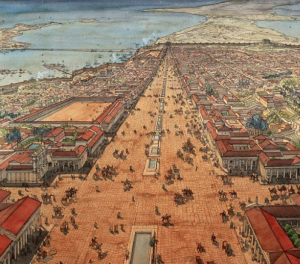 Perhaps we should return to the original locus where the question about the fourth is first raised: the Platonic Timaeus. The Timaeus takes place on the third night after Socrates’ famous visit to Piraeus on the occasion of a newly established festival. He spent that night at the house of Cephalus with Glaucon and Adeimantus, among others, discussing what we know today as the Republic.
Perhaps we should return to the original locus where the question about the fourth is first raised: the Platonic Timaeus. The Timaeus takes place on the third night after Socrates’ famous visit to Piraeus on the occasion of a newly established festival. He spent that night at the house of Cephalus with Glaucon and Adeimantus, among others, discussing what we know today as the Republic.
But if we know of the Republic at all, that is because Socrates recounts the discussion of the previous night in all its details the very next day to the triumvirate of Timaeus, Hermocrates and Critias, that is to the three persons who would assume the duties of the host and serve Socrates a different feast of speeches in return, as recorded in the dialogues which bear as titles their names: the Timaeus and the Critias. To summarize, then, the Timaeus takes place on the third day after that night when the discussion about the ideal city—and of the soul, of the soul as the magnified paradigm of the polis— took place.
At the beginning, now, of the Timaeus, not only Socrates himself provides the reader with a summary of the Republic, but also Critias narrates a story that would become famous as re-told in the dialogue that bears his name, that is, the story of Atlantis. The story, Critias tells us, was told to him by his grandfather on the third day of the festival Apaturia. The authorship of the lost city’s story, however, belonged to Athens’ famous lawgiver, Solon.
The mise-en-scéne is familiar. Three nights ago, Socrates had assumed precisely the role of a lawgiver in establishing a similarly fantastical city. Only with one difference: Solon’s story is true (21d8, 26d, 26d2-3, 26e 4- 5), while Socrates’ account of the ideal city is called a myth (26c8, 26e4). Is then the Timaeus the truth of the Republic?
If our quest for the fourth, or at least for the conditions on the basis of which the question of the fourth can be raised lead us through the dense terrain of the Republic, then this is the route we must take.
Let us then begin again with the Republic and begin with its beginning, or rather its beginnings, as one could count three different beginnings: one beginning at the beginning, a second beginning after the abortive conclusion of the first book that begins anew with Book II (through book IV), and a third beginning at the beginning of Book V, where the opening scene of that first beginning is repeated and perhaps parodied.
Three beginnings. The third beginning—we could say the “third movement” in the Symphony of the Republic—consists, in turn, of the unfolding of three waves, as Socrates calls them (457b7-457c5 and 472a3-4). These are:
- The discussion about the equality between men and women in the City (451b9- 457b6)
- The discussion about the community of spouses and children in the City (457c10- 471c3)
- And the discussion about the Philosopher-Kings (473c11-to the end of the book, continuing on book VI and VII)
Every one of these three waves puts forward in some respect the question of the Other. In the two first waves the Other manifests itself as the feminine and the Child. In the third wave the Other, as the prerogative of the philosopher’s knowledge, assumes the form of that which is “otherwise than being,” the Good “beyond being.”
Even though the Other makes a threefold appearance in the Republic, or, precisely because its appearance remains threefold, that is, unable to move beyond the limits of trinitarian structure, otherness is suppressed by the laws of the City. There is no place for otherness in the (Platonic) political.
The theme of that suppression was announced already from the very first pages of the Republic, when Cephalus draws a parallelism between sexual desire and political authority. Getting older, Cephalus said, frees oneself from the mania of a wild Master (329d and 329c4). Furthermore, in the same prelude to the dialogue, Cephalus is told to be not the father of his wealth and therefore he “does not love money that much” (330b8- 9)—not as much, at least, as poets love their own poems and fathers their own children (330c3-4). I see in this double metaphor an oblique reference to the discussions on the poets (in book III) and on parenting (in book V, second wave).
Desire is to be either excluded or repressed in the City. Cephalus serves as the emblem of that City and his name (“the Head”) already tells us enough about what kind of City we are to encounter, a City of Heads (where the “heads” of the City, the rulers, are disproportionally discussed in comparison to the other classes) and, therefore, a City where there is no place or consideration for the body (e.g., in Book V, the difference between women and men is reduced to the difference between bold and hairy men [454c2] or, the fact that gymnastics is also to benefit the soul, with little or no reference to the body, [in Book III, 403d]).
This is the time to remind you that Socrates turns to the discussion of this ideal city only insofar as it can serve as an image of the Soul, whose tripartition into the rational, the spirited and the desiring part is famously established throughout this dialogue’s pages. That tripartition of the soul is, of course, not unknown to all of us who recognize in it Freud’s three celebrated psychic agents, namely, the super-ego, the ego, and the id respectively.
If we were, for a moment, to look back at the Timaeus, from where we began this journey, we will see that here (69b-71a), the three parts of the Soul are localized to distinct parts of the human anatomy: the head for the rational part, the breast for the spirited part, and the belly and what lies under the belly for the desiring part. Thus, we come back to the image that the name of the Republic’s host implies, that of a bodiless head, a city only of rulers, a soul rational alone.
In his insightful reading of Oedipus Rex, Goux draws a comparison between the tripartite monster that Oedipus confronts (the Sphinx) and the tripartite structure of the soul as presented by Plato’s psychology.2 This allows him to be critical of Hegel’s reading of the confrontation between the Theban King and the Sphinx as the inaugural moment of rationality.3
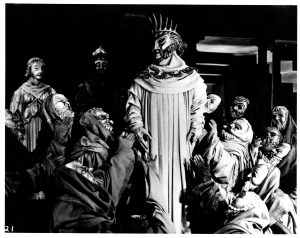
If this is so, Goux argues, it is on the expense of the irascible and concupiscent elements of the soul that the exclusive identification of man with reason does not defeat, but rather allows them to operate on their own, it leaves them uncontrolled, and ultimately enables them to return as the desire to kill the father (irascible) and sleep with the mother (concupiscent). Where, in such sequence of metaphors and in the proliferation of trinities that come along with them, is the Other? Where is the fourth?
Yet, Plato himself has warned us that the division of the City into three classes is a lie, albeit noble (414c), and that the difference between rulers, guardians and producers does not correspond to a metallic difference in their origin (in gold, silver, and bronze or iron respectively). One is to draw from this that the tripartition of the Soul which was based upon and illustrated by the division of classes in the City is equally artificial and that therefore there is no essential difference between the rational part and the desiring part, or—I am still following Plato—between one’s head and one’s genitals. Trinity has collapsed into unity; it has revealed itself as the specter of the most metaphysical of all concepts or numbers, the One.
Thus, we have traced the unfolding of the Republic from the one definition of justice which Book I seeks but fails to capture (a definition cannot but be one); to the two dimensions of the paradigm (the City, Socrates says, is depicted as if painting); to the three dimensions of the Republic’s dialectics (“just like a sculptor” Glaucon remarks at the end of Book VII).
Where is the fourth? The Timaeus represents indeed a fourth beginning, and the rehearsal of the Republic at the opening of the dialogue indicates the connection with its great counterpart. Especially as Socrates states that, “like someone who has spent a long time staring at beautiful animals, either painted, or alive but motionless, has now the desire to see them moving and in action, so I feel with regards to the City which we have discussed” (19b-c).
It is as if Socrates says that the City—and, remember, this is still an image of the soul—has been sufficiently analyzed in theory, it is, therefore, time to see it springing to action, in movement, that is, in history. He, the philosopher, cannot proceed further. It is Critias and Hermocrates who can accomplish this task of bringing the theoretical, indeed one can say here the eidetic, to the everydayness of the concrete and historical. And that was the master plan of Plato’s great tetralogy, consisting of the Republic, the Timaeus, the Critias, and the Hermocrates.
By each dialogue, as if by a new step, the reader would have been brought closer to contemporary history, to the history of oneself. In inheriting Socrates’ ideas of the Republic, Timaeus in his dialogue gives us a genesis, a cosmogony, stopping, appropriately, with the creation of the first human beings; Critias, then, picked the story from where Timaeus had left it and went through humanity’s mythical past. Finally, Hermocrates, in the dialogue that would have been named after him, would have completed the progression by taking us to the present now. As you know, the Critias was left abruptly unfinished, and a Hermocrates was never written. The fourth dialogue—and along with it, the quest for the fourth—remains an unfulfilled promise.
John Panteleimon Manoussakis is Associate Professor of Philosophy, College of the Holy Cross in the United States and Honorary Fellow of the Australian Catholic University, Australia. He is the recipient of a Templeton Foundation grant. He is the author of three books, editor of five volumes and he has published over thirty articles in English, Greek, Russian, Serbian, and Ukrainian. His books include God After Metaphysics: A Theological Aesthetic (Indiana University Press, 2007) and For the Unity of All: Contributions to the Theological Dialogue Between East and West (Cascade Books, 2015).
_______________________________________________________________________
1 Brian Becker, “Flight from the Flesh: Freud’s Id and Ego as Saturated Phenomena,” pp. 18-19 of the manuscript (emphasis added).
2 “[Oedipus] relies on the victories won by pure reflection and on a clear consciousness of self. His failure to recognize the forces he should have controlled and integrated is thus allowed to burgeon. Instead of letting the wise element dominate the others, the irascible and the concupiscent elements, Oedipus detaches this reasonable element, gives it a kind of autonomy and independence (by self-reflection), to such an extent that the lion and multiform beast find themselves unchained, released, liberated. Patricide and incest, even involuntarily committed, are the most searing and profound expression of that liberation, itself involuntary, unpremeditated, of two nonhuman elements. When Oedipus gets angry and kills Laïus, it is the lion element that is rebelling against the head. When Oedipus manages to share the queen’s bed, it is the concupiscent element that is secretly satisfied. Each of Oedipus’s involuntary crimes embodies a return of a part of the Sphinx, the return of an unconsumed and uncomforted element of the tripartite monster that represents the monstrosity of the soul itself in its cryptic profundity.” Goux, Oedipus, Philosopher, p. 157.
3 Hegel, Aesthetics, translated by T.M. Knox (Oxford: Oxford University Press, 1975), vol. I, p. 361: “It is in this sense that the Sphinx in the Greek myth, which we ourselves may interpret again symbolically, appears as a monster asking a riddle. The Sphinx propounded the well-known conundrum: What is it that in the morning goes on four legs, at mid-day on two, and in the evening on three? Oedipus found the simple answer: a man, the he tumbled the Sphinx from the rock. The explanation of the symbol lies in the absolute meaning, in the spirit, just as the famous Greek inscription calls to man: Know thyself.” Hegel offers these remarks at the end of the section entitled, significantly enough, “Unconscious Symbolism.” It is also interesting to note that he connects Oedipus’ answer with the Delphic inscription (an allusion to Apollonian, and by extension, Socratic spirit). See also, Goux, pp. 164-6.
